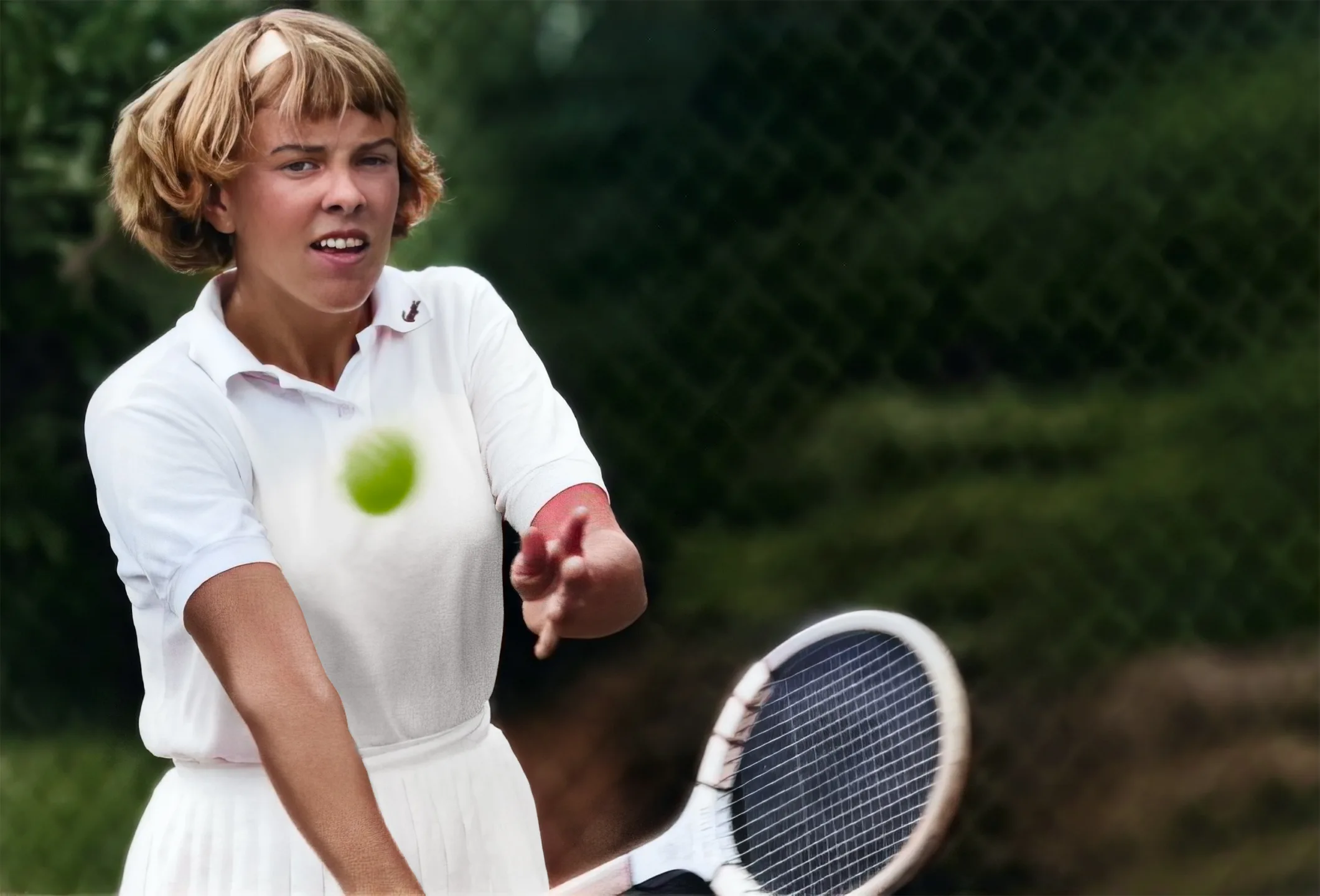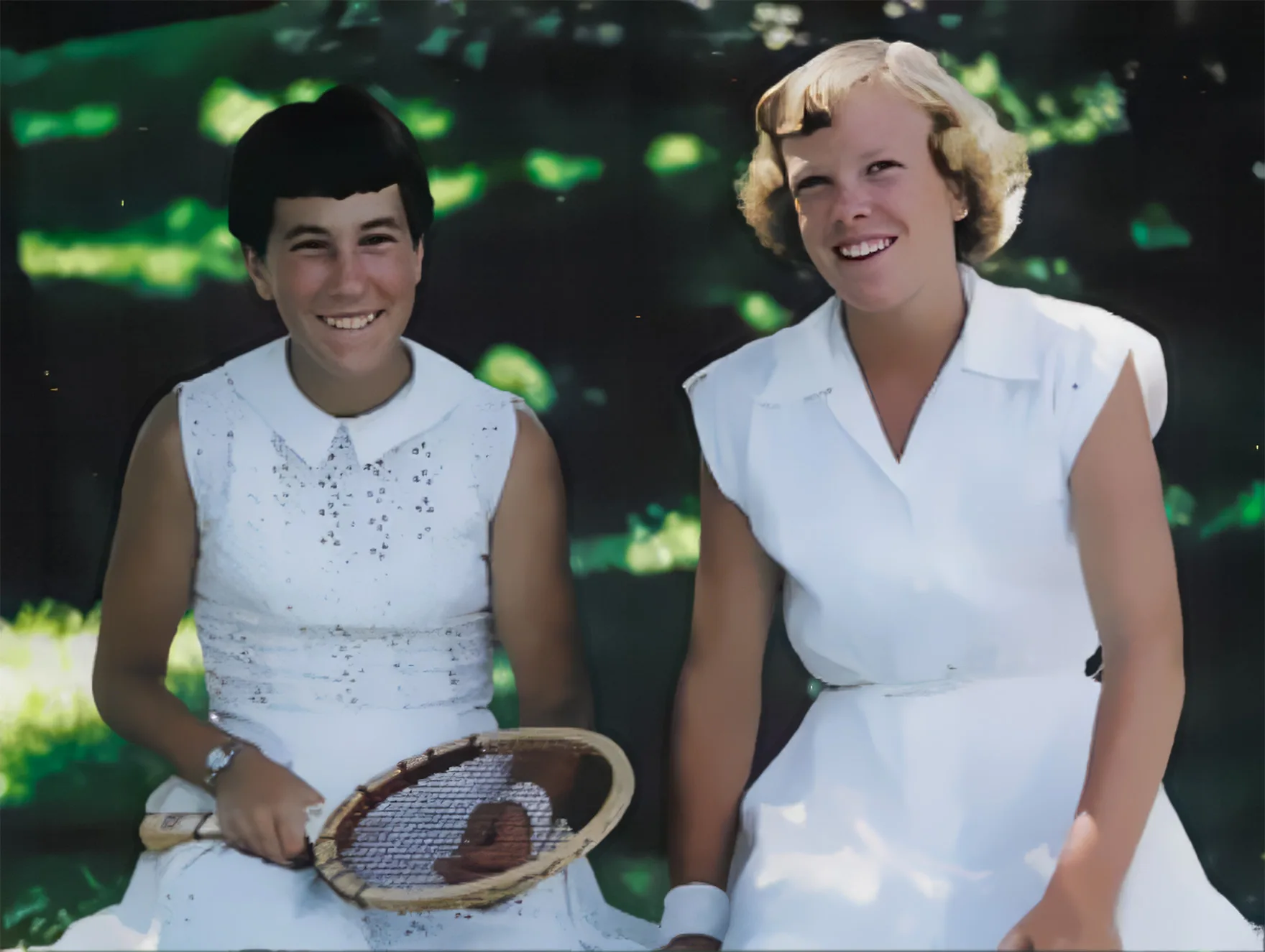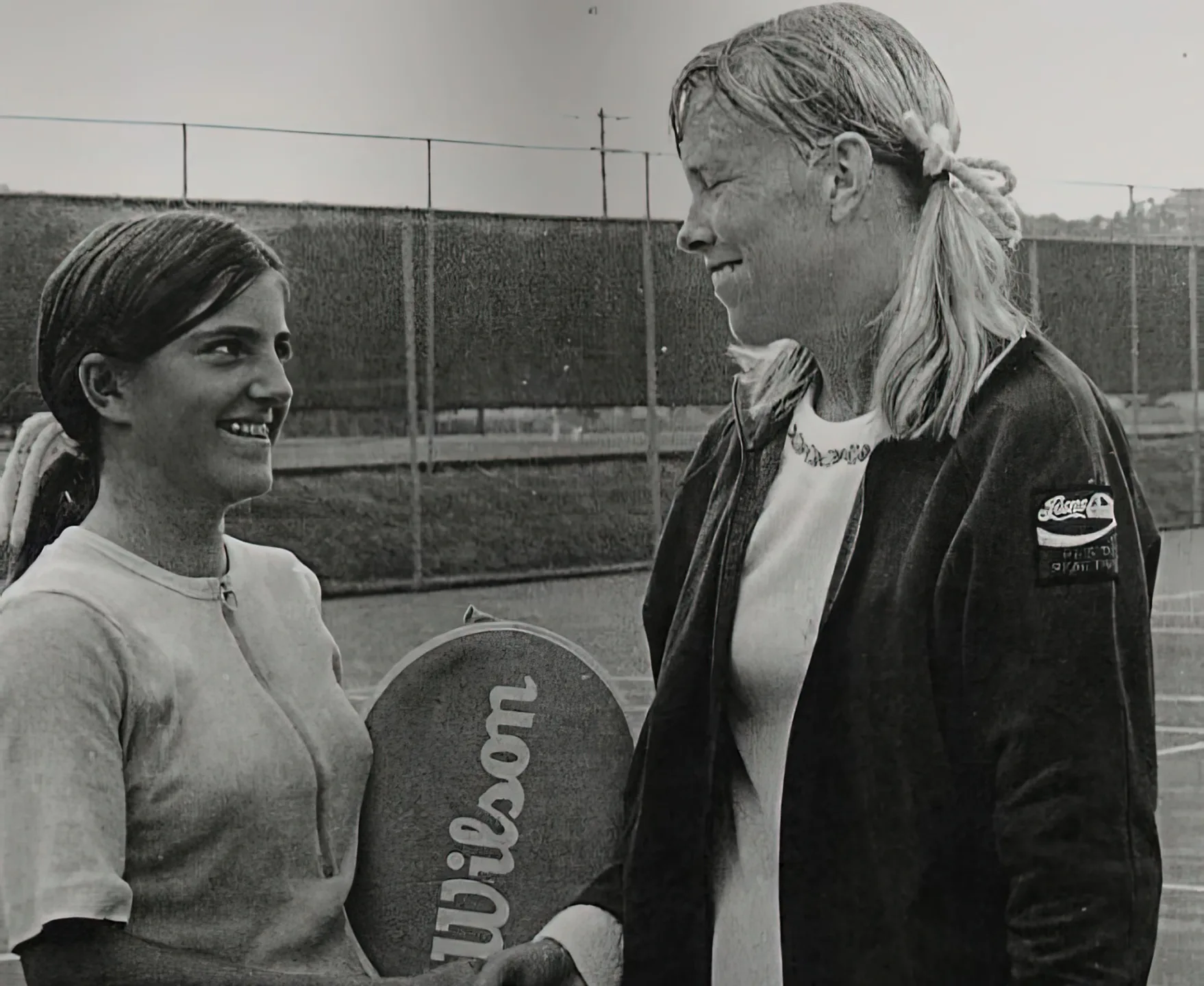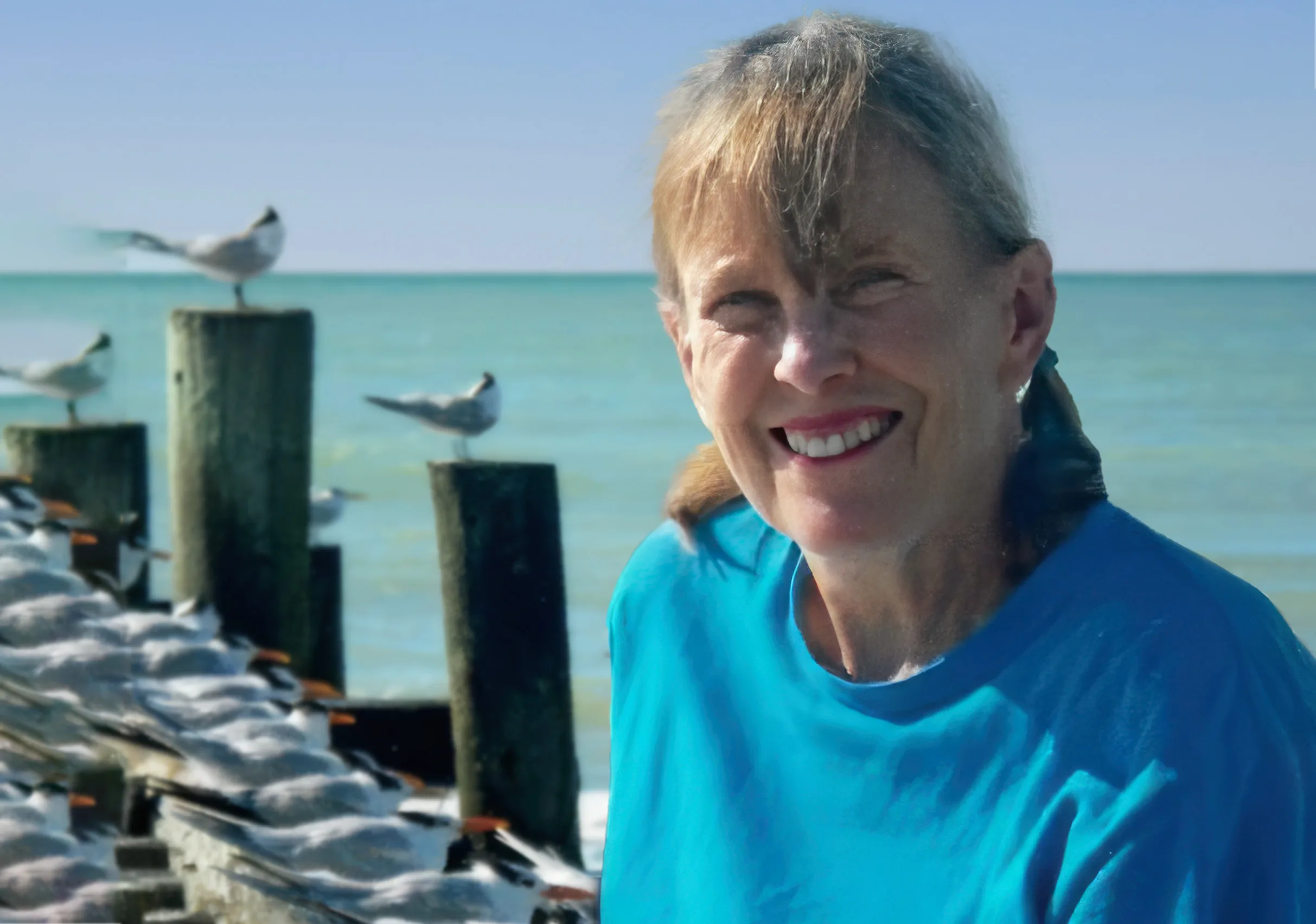Story by Ron Cobb
Special to the St. Louis Tennis Hall of Fame
In anticipation of the 2024 opening of the new St. Louis Tennis Hall of Fame at the Armory, 2016 inductee Ron Cobb has written a “What’s Up With” feature on every living Hall of Fame member. Ongoing, he is also writing regular features about the Hall of Fame and the Armory. And you can expect stories and other media about all our inductees, living and in memoriam.
A 1964 run to the semifinals at Forest Hills, where she was stopped by Hall of Famer and eventual champion Maria Bueno, was ages ago for Carol Aucamp. It’s a good memory to look back on, but despite having turned 80 this spring, she isn’t ready to sit back and do much reminiscing. As Carol says, “I’m not one to spend a lot of time looking back.”
For one thing, she’s too busy writing a book, plus tending to a North St. Louis church’s garden and farm and helping drug-addicted and homeless men achieve recovery.
Four or five days a week, Carol can be found at Jubilee Community Church at 4321 Grand Boulevard. She’s on the staff there after having joined the church 15 years ago. Prior to that, Carol had been active for 12 years in a Kinloch church’s office and outreach center, and before that in a suburban evangelical church for 28 years.
Her book has a working title, “Slavery’s Effects Seen Today: What Really Happened, What Can Be Done About It.” The book reflects a shift in Carol’s focus to race and poverty. That shift began as far back as the mid-1980s when Carol’s older brother, Thomas Hanks, wrote a book titled “God So Loved the Third World.” Carol says the book opened her eyes about the issue of poverty and oppression.
Jubilee’s senior pastor, Dr. Bryan Moore, told Carol she needed to write the book she is working on. He is a fifth-generation grandson of Nat Turner, the leader of the slave rebellion in 1831 in Virginia.
“He thinks it will get a lot of publicity because I’m an unusual author for this topic,” Carol said, referring to Moore, “and I know way more than most white people know about this. So he’s got a lot of archives and sources for stuff that most white people have never read or heard of.
“So when I have some of this stuff up front in the book, he says it will shock black scholars.”

In the eyes of at least a few, Carol became a pioneer in sports when she teamed with Arthur Ashe in 1963 and 1964 to play mixed doubles at Wimbledon, making them only the second mixed-race team in the tournament’s history. Carol says she didn’t think much about it until around 2000 when a pastor at her church “told me how excited his brothers in Mississippi were that Carol Hanks was now one of his members.”
Carol said the comment made her feel good, but it also reminded her that her tennis career and new marriage to Don Aucamp kept her so busy, “I didn’t do a thing to help (the civil rights movement) in those crucial years.”
After graduating from John Burroughs, Carol enrolled at Washington U., which at that time didn’t have a women’s tennis team. By then she had already played at Wimbledon. When the University of Alabama broke new ground by adding Roberta Alison to its men’s team, and garnering national publicity by doing so, athletic director Harry Burrus decided to invite Carol to join the WashU men.
“I snapped it up,” Carol recalls. “It was a chance to get match-play competition at a time of year when usually I’d be getting none.”
By 1964, Carol had risen to No. 5 in the U.S. and No. 9 in the world, leaving her pondering how she might go even higher. Her early mentors were Earl Buchholz, Sr. and Larry Miller, and then, at Forest Hills, Bill Price asked if she’d like to go back to WashU and “we’ll work on your game.”

A young Carol and her friend Justina Bricka
Price’s top player was Chuck McKinley, the 1963 Wimbledon winner.
“Price seemed to have this mystique about him,” Carol said. “I thought maybe he could help me bridge the gap between No. 5 and 1.”
Carol got Miller’s blessing, but ultimately, she said, “I didn’t get the help from Price that I thought I would.”
Since her tennis days, Carol has been on 15 mission trips to El Salvador and one to Belize.
“During that first trip I received so much more than I gave,” she said. “I cried when we had to come home. I just fell in love with the people and the country.”
Carol and Don’s only child, Alison, had begun showing interest in mission trips and helping the poor – she made three trips to El Salvador with Carol. During her college years at Duke, Alison volunteered at Urban Promise, an inner-city facility in Camden, N.J.
Alison got her degree and went back to Duke for grad school and was finishing work toward a doctorate in finance. Carol recalls her daughter as an adventurous sort, eager to ride roller coasters at Six Flags or go para-sailing in Florida. And so Alison accepted when friends invited her to go sky-diving. Her first attempt proved to be a fatal one.
“Ali had been living a great life,” Carol said. “She didn’t suffer, and she just went home to be with the Lord.”
Carol said Ali would be very proud of the work she’s doing at Jubilee Church.

Carol Hanks Aucamp with fellow St Louis Tennis Hall of Fame Member Kim Steinmetz
Carol Aucamp was inducted into the St. Louis Tennis Hall of Fame inaugural class of 1990.

